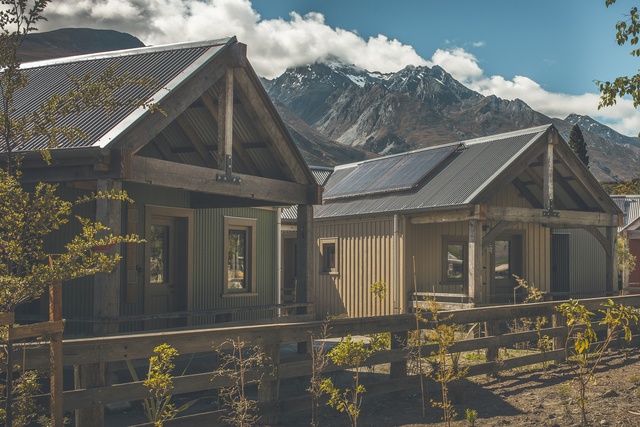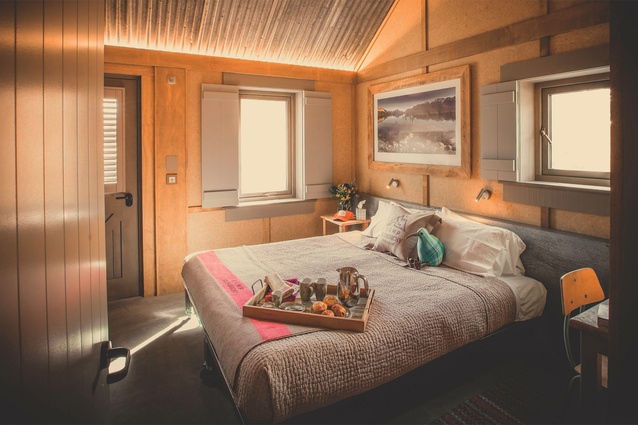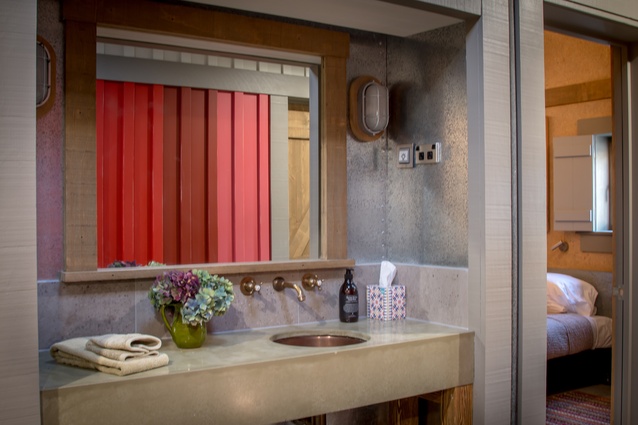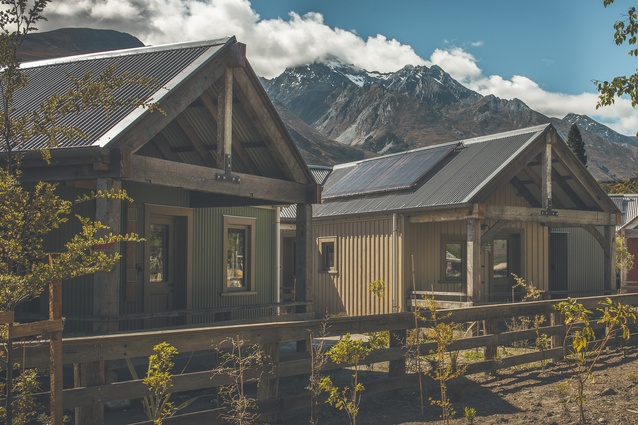Camp Glenorchy: Net Zero accommodation
A campground in Otago’s idyllic Glenorchy is hoping to lead by example in sustainability.
Camp Glenorchy, at the gateway to Mount Aspiring National Park, must be New Zealand’s most sustainably designed and operated visitor accommodation project. It is the first in the world built to meet Living Building Challenge (LBC) criteria: arguably the most rigorous standards in global sustainable design.
However, the innovation and engineering behind the seven cabins, two bunk-houses and communal spaces are not the focal points when it comes to design. The tendency with green architecture might be to minimalise aesthetics and hero the technology – particularly when it leads the world.
In this case, Debbi Brainerd, co-founder of The Headwaters, which created and built Camp Glenorchy and also oversees Mrs Woolly’s General Store, has worked with Dunedin architects Mason & Wales and interior designer Jewell Cassells to capture the alpine charm first and foremost. “We had to think about how to achieve Net Zero certification while creating an experience that feels warm and inviting, and feels like a community,” says Brainerd.

The resulting nine wood-and-metal cabins are simple, yes, but charming with recycled strandboard walls, natural fabrics and copper fittings, alongside composting toilets, solar tube lighting, fresh-air transfer units and – to maximise heat efficiency – modest windows. Accents of rusty orange and watermelon along with local artists’ works add warmth, while shutters visually extend the window frames. This was the theme throughout the project, says Cassells.
“We had to make and revisit a lot of decisions – from light usage energy to blending in sophisticated heating and cooling systems – to ensure we met LBC criteria but still had a welcoming, well-lit space which people wanted to come back to.” Brainerd says that, while the cabins are comfortable and well appointed, they are relatively compact, both to encourage guests to come out and meet in the Homestead’s communal spaces, and to help reduce energy consumption.
At the same time, a tablet in each room helps guests learn about and control their own energy and water use during their stay. Meandering stone mosaic paths connect the cabins to the shared indoor and outdoor spaces in Camp Glenorchy, where the same creative brief shines through – warm and welcoming, a space to reconnect. This goes back to the ethos of camping – connecting with fellow travellers, engaging with the surroundings, and in this case going one step further and leaving a very, very light footprint.












